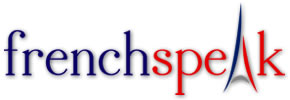French is one of the most spoken languages in the world and its use in only increasing with every passing day. The article will talk about different French levels of the language. Linguistic proficiency is defined as the ability of an individual to speak, perform and understand a particular language. If you are an aspiring French learner or are beginning to learn the language, then this article will be very useful for you as it contains all the crucial information about the French language and how to progress through the levels
For most European languages including French, the Council of Europe develops the Common European Framework of Reference for Languages (CEFR) sets standards that are used to measure the proficiency of individuals in various languages spoken in Europe and the French language is one among them. CEFR splits language learners into three main types – A, B, C and then additionally divide each category into two categories like A1, A2, and B1, B2.
We will discuss these levels in details in the latter part of the article but, let us first understand why these levels have been created.
The reasons for why these Levelised assessments are essential for the French language are many, some of which are as follows:
- They help in self-assessment of learners so that they can determine their current level and improve accordingly to their requirement.
- A CEFR diploma is valuable for your résumé, and it often has unlimited validity.
- Schools and universities often demand a CEFR accredited certificate to apply for admissions. Same applies in case of employment opportunities.
- CEFR certificates are internationally recognised, expanding your eligibility of application to various countries where French is spoken.

Now, let us look at what are these levels and how do they are different from each other. There are six official levels in the French language:
1. A1 DISCOVERY
A1 is the first stage of CEFR ‘basic user‘ category. A person with A1 level proficiency:
-
- Can understand and use familiar, everyday expressions and very basic phrases aimed to fulfil concrete purposes.
- Can introduce himself/ herself and others, and can ask and answer questions about personal details about home, family and surroundings.
- Can communicate in a basic way when the other person speaks slowly and clearly and is willing to repeat or reformulate to aid the communication.
It is the Beginner (Discovery) level of proficiency.
2. A2 SURVIVAL
At this level, the sentences become slightly more complicated due to the introduction of new tenses to help the learners speak in the near future and the past. A person with this level of proficiency:
-
- Can understand sentences and frequently used expressions related to areas of most immediate personal relevance (e.g. basic personal and family information, shopping, local geography, employment).
- Can communicate and perform tasks which are routine and involving a direct exchange of information.
- Can describe their surroundings and communicate immediate needs using simple words straightforwardly.
It is the Elementary (Survival) level of proficiency of a speaker.
3. B1 INDEPENDENT
The B1 level is the first stage of the CEFR ‘independent user‘ category. It means that you are no longer dependent on the second person to facilitate communication. The learners know enough to be able to build more complex sentences to communicate. However, learners are not entirely fluent. A person with B1 level proficiency
-
- Can understand the key points of a standard speech on familiar subjects at work, school, leisure activities, etc.
- Can handle travel situations in regions where the language is spoken without straining either themselves or the native speakers.
- Can create a clear and detailed text on a range of subjects and provide their opinion
- Can narrate an event, an experience or a dream; describe a desire or goal, and outline reasons or explanations behind a project or idea.
It is the initial stage of the Intermediate level of proficiency.
4. B2 UPPER INTERMEDIARY
A B2 level learner can communicate more fluidly and spontaneously by using more idioms and complicated sentence connectors and tenses. They:
-
- Can understand the fundamental ideas of a complete text, including a technical piece related to their area of expertise.
- Can interact with a degree of fluency and spontaneity with a native speaker in a comfortable way for everyone involved.
- Can speak in a clear and detailed manner on a variety of subjects
- Can express an opinion on trivial matters, highlighting their advantages and disadvantages.
It is the final stage of the Upper Intermediate proficiency level.
5. C1 ADVANCED
C1 level is the first stage of the CEFR ‘proficient user‘ category. A C1 learner can follow a conversation very fluently. However, there may still be some expressions or words out of the grasp. A C1 learner:
-
- Can understand a wide variety of long, demanding and complex texts, and recognise any implicit meanings.
- Can express themself freely and fluidly, without any apparent fumbling and searching for words.
- Can use the language effectively and fluently in a social, professional or academic environment.
- Can speak in a clear, organised way about complex subjects, by developing a well-structured argument using connectors and cohesive devices in the language.
It is the Advanced level of proficiency. The learners falling in this stage are close to achieving a native speaker proficiency.
6. C2 MASTERY
This is the final stage of CEFR proficiency. At this stage, the learners can understand pretty much everything and speak like a native. A C2 learner:
-
- Can effortlessly understand virtually everything they read or hear.
- Can summarise information from various spoken and written sources, and simultaneously can reconstruct arguments and accounts in a coherent presentation.
- Can express themself precisely in a spontaneous, fluent fashion, and also easily differentiate the latent shades of meaning even in very complex situations.
This is the Mastery level of proficiency. The learners are no more a foreigner struggling to learn a language.
These are the various levels of proficiency in the French language. As a learner, you will be assessed according to these standard levels.
However, it is also important to certify your knowledge of a language as well. Many exams certify the level of proficiency of French learners.
The most famous of them are— DELF, DALF and TCF. These are French Language Diplomas/ Certificates administered by the International Centre for French Studies (Centre international d’études pédagogiques, or CIEP) for the French Ministry of Education. The latter is used for migrating to Canada.
However, no certification can make you stay proficient in a language and exams can be a great motivator to move through the French levels but not necessary for everyone.
You need to regularly and consistently remain in touch with the language. Keep practising and using the language and don’t allow it to vanish with time.
Bonne chance!






